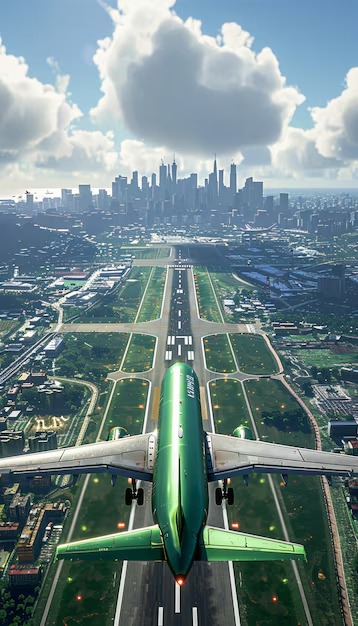
Air Astana Sues Embraer Takes Legal Action Against Over E190-E2 Issues Grounded Aircraft
Air Astana Sues Embraer Takes Legal Action Against Over E190-E2 Issues Grounded Aircraft
A prominent airline has initiated a significant dispute with a renowned aircraft manufacturer, stemming from a series of unfortunate incidents that have led to operational challenges. The situation has escalated, prompting the carrier to seek redress for issues that have adversely affected its fleet capabilities and, ultimately, its service offerings. This conflict is indicative of broader tensions that can arise within the aviation industry when contractual obligations are perceived to be unmet.
At the heart of this matter lies a collection of aircraft that have been rendered inoperative, leading to financial strains and logistical headaches. The airline contends that it has been left with insufficient recourse as it navigates the complexities of maintaining its schedule and fulfilling customer expectations. The emerging litigation highlights the critical importance of accountability and support in manufacturer-operator relationships within the competitive landscape of air travel.
As both parties prepare to present their arguments, the outcome could set a precedent for future interactions in the sector. Stakeholders are closely watching this development, as it may influence not only the involved entities but also the broader operational dynamics within the aviation community. This case serves as a reminder of the vital need for clear communication and reliable partnerships in ensuring the smooth operation of airline services.
Air Astana’s Discontent with Aircraft Manufacturer
The ongoing situation surrounding a prominent aircraft supplier has led to growing frustration from the national carrier. Issues related to the operational reliability of the fleet have prompted significant concern among stakeholders. This sentiment reflects a deeper tension influencing the relationship between the company and its equipment provider.
The recent setbacks have brought to light several key grievances regarding the performance and support for the aircraft delivered. Operational disruptions are impacting service quality and passenger satisfaction, raising questions about accountability and responsiveness from the manufacturer.
| Issue | Description |
|---|---|
| Operational Reliability | Frequent mechanical failures leading to flight cancellations. |
| Customer Support | Lack of timely assistance and communication from the manufacturer. |
| Maintenance Delays | Extended downtimes awaiting parts or service intervention. |
This situation not only affects the carrier’s operational capabilities but also its financial performance and reputation in the competitive aviation market. Stakeholders are demanding clarity and solutions to ensure a robust and reliable fleet moving forward.
Grounding Incident: What Happened?
This section delves into the sequence of events that led to the suspension of service for a fleet of aviation vehicles. An unexpected situation emerged, prompting significant operational challenges for the carrier involved. Factors such as safety concerns and regulatory compliance created a complex scenario for both the airline and its partners.
Initially, an unusual technical issue surfaced during routine inspections. This prompted immediate scrutiny and assessment from maintenance teams. The following actions unfolded:
- Investigation of the anomalies reported by flight crews.
- Collaboration with aircraft manufacturers to identify the root cause.
- Implementation of temporary measures to ensure passenger safety.
- Communication with regulatory bodies regarding the findings.
- Formal announcements to passengers and stakeholders about service interruptions.
Throughout this timeframe, the implications of the incident were far-reaching, affecting flight schedules, financial ramifications, and customer experience. As the situation developed, ongoing dialogues between the airline and relevant authorities became essential to navigating the challenges posed by this circumstance.
In conclusion, the incident underscored the importance of robust safety protocols and transparent communication in the aviation industry, highlighting the continuous effort required to maintain trust and reliability in air travel.
Legal Reasons Behind the Lawsuit
This segment explores the fundamental principles and rationale that underpin the grievance filed by the airline company. The proceedings arise primarily from alleged breaches of contractual obligations, highlighting the significance of compliance with agreed terms between manufacturers and operators. The emphasis lies on the repercussions that arise from failures to meet industry standards and commitments.
At the heart of this dispute is the assertion that the provider of the aircraft has not fulfilled its responsibilities outlined in the purchase agreement. These responsibilities encompass the delivery of functioning and reliable planes, as well as essential support services necessary for their operation. If proven, such failures could result in significant financial distress for the carrier.
Furthermore, the case may delve into issues related to warranty claims and the extent of liability concerning structural or technological deficiencies. The airline firm argues that the lack of operational capability has caused substantial economic harm, justifying the need for redress and seeking compensation for losses incurred during the affected period.
Ultimately, this situation raises broader questions about the accountability of manufacturers and the protection mechanisms available to operators in the event of non-performance. The outcome of this litigation could set important precedents, influencing future interactions in the aviation industry.
Embraer’s Response to the Allegations
In light of recent accusations, the manufacturer has issued a formal statement addressing the concerns raised. The company emphasizes its commitment to safety and high industry standards, asserting that they have consistently complied with regulatory requirements and protocols.
Company representatives noted that thorough investigations are underway to understand the underlying factors contributing to the current situation. They expressed confidence in the integrity of their products and highlighted their track record of reliability in various operations worldwide.
Furthermore, Embraer reiterated its willingness to collaborate with all relevant parties to ensure swift resolutions and restore confidence in its fleet. The firm is dedicated to maintaining open lines of communication, underscoring their proactive approach to addressing clients’ concerns and reaffirming their role as a leader in the aviation industry.
Impact on Air Astana’s Operations
The recent developments involving the airline have significant implications for its overall functioning and service delivery. The inability to utilize certain aircraft in their fleet could lead to operational challenges, affecting not only scheduling but also revenue generation and customer satisfaction.
Operational Disruptions
With several planes grounded, the airline faces potential route cancellations and delays. This will inevitably strain existing resources, requiring adjustments in flight schedules and possibly leading to increased workloads for remaining crew members. Such disruptions could hinder the carrier’s ability to maintain its usual level of efficiency and reliability.
Financial Consequences
Financially, the implications are equally concerning. The need to seek replacements or compensate for lost capacity can lead to increased operational costs. Furthermore, reduced flight availability may deter passengers, resulting in lower ticket sales and potentially harming the airline’s reputation in a competitive market.
Ultimately, the situation poses significant challenges that require proactive management to mitigate adverse effects on service quality and financial performance.
Future Implications for Aircraft Partnerships
The recent dispute in the aviation industry underscores the complexities and challenges inherent in partnerships between manufacturers and operators. As the landscape evolves, such incidents could lead to significant shifts in how stakeholders collaborate, manage risks, and approach contractual obligations. Understanding these future implications is crucial for ensuring sustainable growth and operational resilience in the sector.
Strengthening Compliance and Accountability
In light of the current scenario, one of the most notable outcomes may be an enhanced focus on compliance and accountability among partners. Companies are likely to establish more rigorous frameworks and guidelines to govern relationships and ensure that each party meets its obligations. Additionally, this may also result in increased scrutiny and evaluation of supply chain practices, driving a culture of transparency and trust.
Impact on Innovation and Collaboration
The strain on partnerships could stifle innovation if stakeholders become wary of sharing information and resources. However, it may also prompt a reevaluation of collaborative strategies, leading to new alliances that prioritize agility and competitive advantage. Stronger collaboration through joint ventures and shared technologies might emerge, fostering a more resilient and responsive industry.
Ultimately, the ongoing challenges highlight the necessity for adaptive strategies that will shape the future of partnerships in aviation, ensuring manufacturers and operators can navigate uncertainties and capitalize on emerging opportunities.
Q&A: Air astana sues embraer over grounded planes
What is the significance of the e2 aircraft in Kazakhstan’s aviation industry?
The e2 aircraft represents a modern addition to Kazakhstan’s fleet, enhancing operational efficiency and safety standards for airlines like Air Astana.
What obligations does Air Astana have regarding the e2 aircraft?
Air Astana has specific obligations to Air Astana concerning maintenance and operational safety, ensuring compliance with aviation regulations and standards.
What led to the decision to suspend the use of e2 aircraft?
The decision to suspend aircraft operations was influenced by identified system failures in the anti-icing system, which could constitute an immediate safety risk.
How has Air Astana responded to the allegations regarding the e2 aircraft?
Air Astana and will vigorously defend against all claims related to the e2 aircraft, asserting that they have already dedicated many resources to address any concerns.
What legal actions have been taken regarding the e2 aircraft issues?
A lawsuit was filed against Air Astana concerning the e2 aircraft, prompting the airline to prepare its defense strategy.
What are the implications of the hydraulic system failures in the e2 aircraft?
Hydraulic system failures in the e2 aircraft pose a significant safety risk, prompting regulatory scrutiny and necessitating immediate corrective actions.
How does Aercap relate to Air Astana’s operations with e2 aircraft?
Aercap is involved in leasing arrangements for the e2 aircraft, which are crucial for Air Astana’s operational capabilities and financial commitments.
What was the financial impact of the suspension of e2 aircraft on Air Astana?
The suspension of e2 aircraft operations has financial implications, including potential losses amounting to 11.9 million, affecting the airline’s service to its customers.
What measures are being taken to address safety concerns with the e2 aircraft?
Air Astana has implemented enhanced safety protocols and inspections for the e2 aircraft, particularly focusing on the anti-icing system to mitigate any risks.
How does Air Astana plan to ensure the safety of its operations moving forward?
Air Astana and will vigorously defend its commitment to safety by continuously monitoring and improving its fleet’s operational standards, especially concerning the e2 aircraft.
Air Astana filed a lawsuit against Embraer regarding the safety of its aircraft. What prompted this legal action?
The legal action was prompted by concerns that the five Embraer E190-E2s were unsafe to fly, leading to operational disruptions for Kazakhstan’s Air Astana.
What specific claims does Air Astana make about Embraer in the lawsuit?
Air Astana claims that Embraer has breached any obligations to Air Astana and accused them of being grossly negligent regarding the safety and reliability of the aircraft.
How did the issues with the five Embraer E190-E2s affect Air Astana’s operations?
The issues with its five E190-E2s led to significant financial losses suffered by Air Astana and resulted in a fleet of brand-new aircraft parked and unable to operate.
What kind of failures did flight crews encounter while operating the Embraer E190-E2s?
Flight crews encountered mechanical failures that resulted in missed test flights and issues with key systems, including oxygen masks, which raised safety concerns.
What is the significance of the New York Supreme Court in this case?
The New York Supreme Court is where Air Astana filed a lawsuit against Embraer over issues relating to the safety and reliability of the E190-E2s.
How does Air Astana plan to handle the claims made by Embraer?
Air Astana is committed to going ‘above and beyond’ in service and will vigorously defend against all claims asserted by Embraer.
What reputation does Embraer have in the aviation industry, and how does it relate to this situation?
Embraer has a reputation for quality aircraft, but Air Astana alleges that they were not entirely forthcoming about quality issues with its five E190-E2s.
What specific remediation steps is Air Astana seeking from Embraer?
Air Astana is seeking remediation steps to address the quality issues with its five Embraer E190-E2s that have proven to be susceptible to inflight failures.
What types of failures were reported during emergency landings involving the E190-E2s?
During emergency landings, there were failures in the activation of key systems, which were susceptible to inflight failures without crew intervention.
How does this situation compare to other aircraft like the Boeing 787 in terms of safety concerns?
While both Embraer and Boeing produce aircraft with high safety standards, the specific issues faced by Air Astana with its five E190-E2s have raised unique safety concerns that differ from those associated with the Boeing 787.







